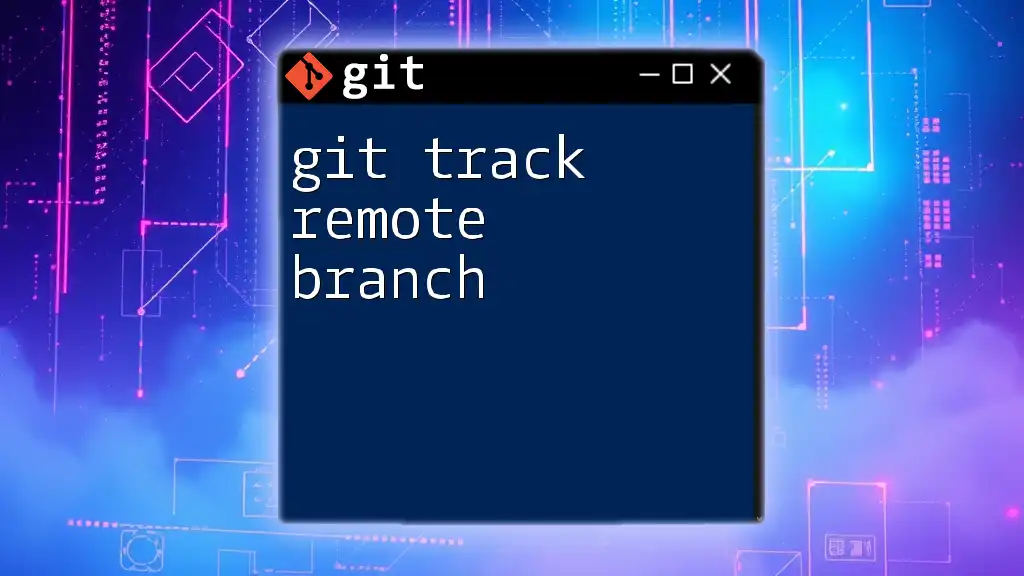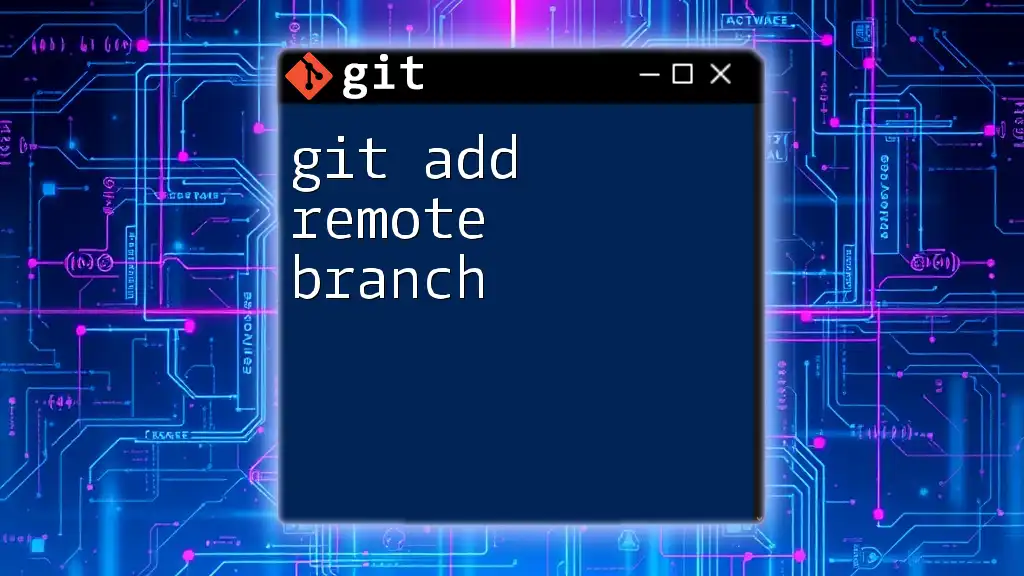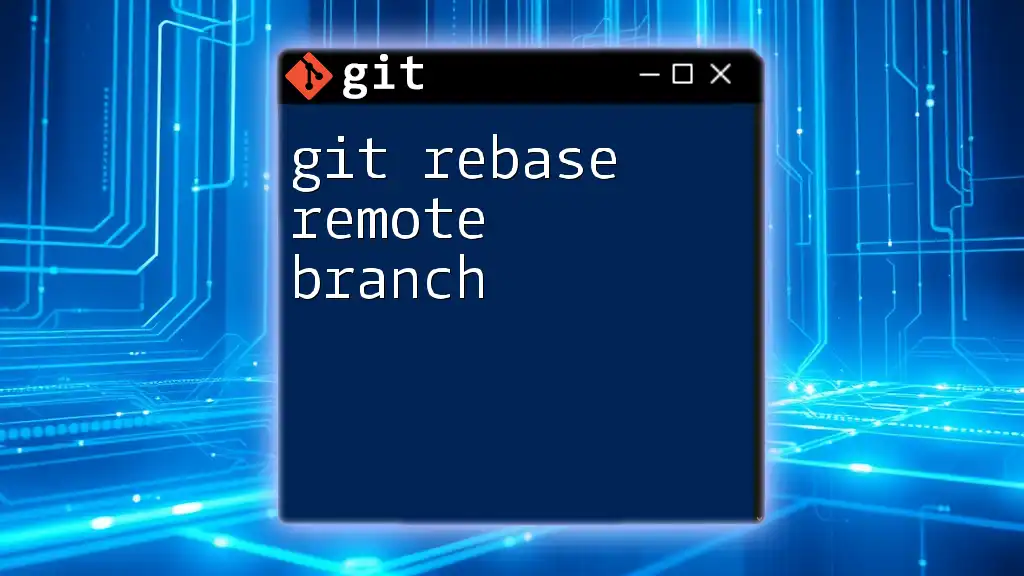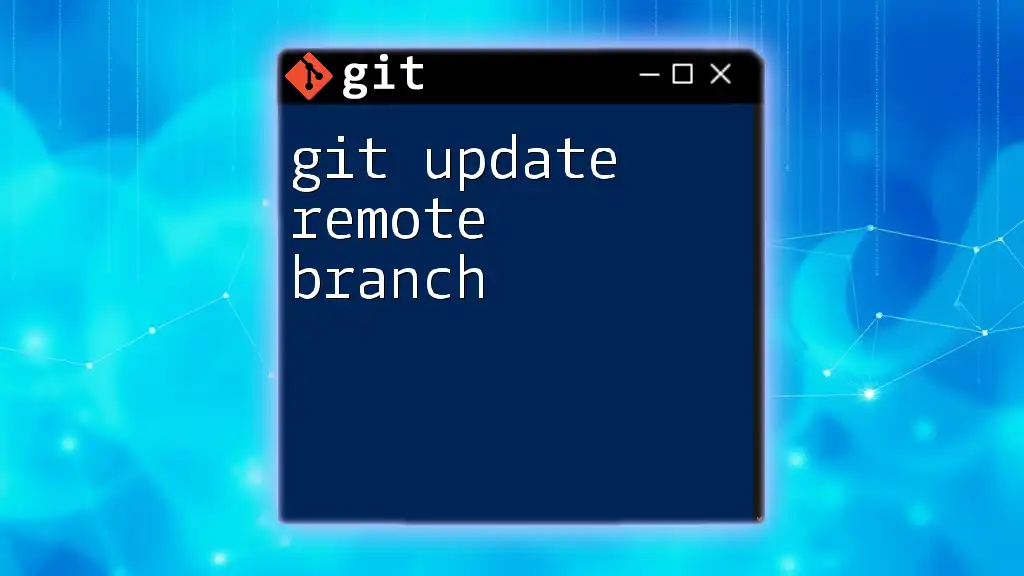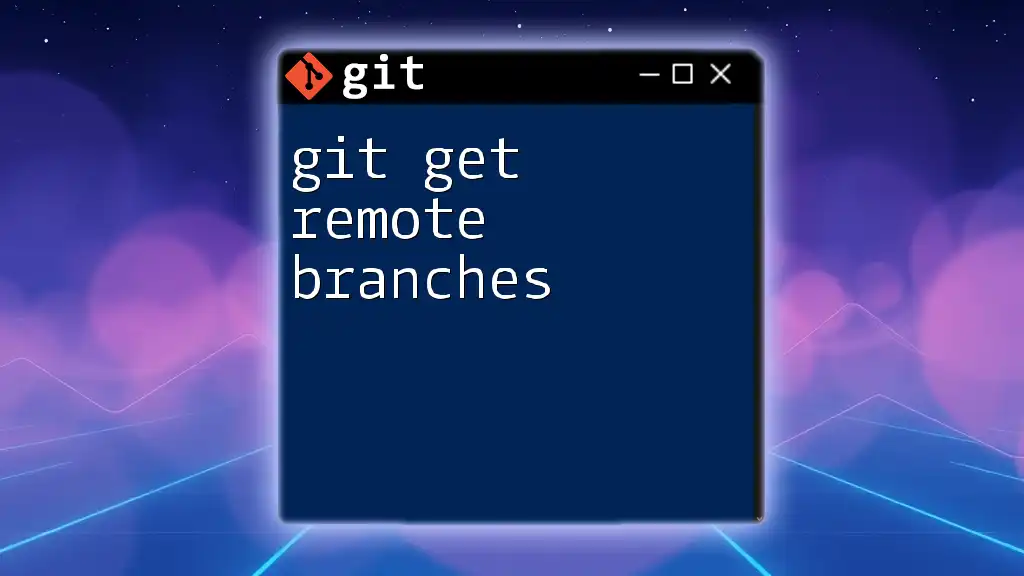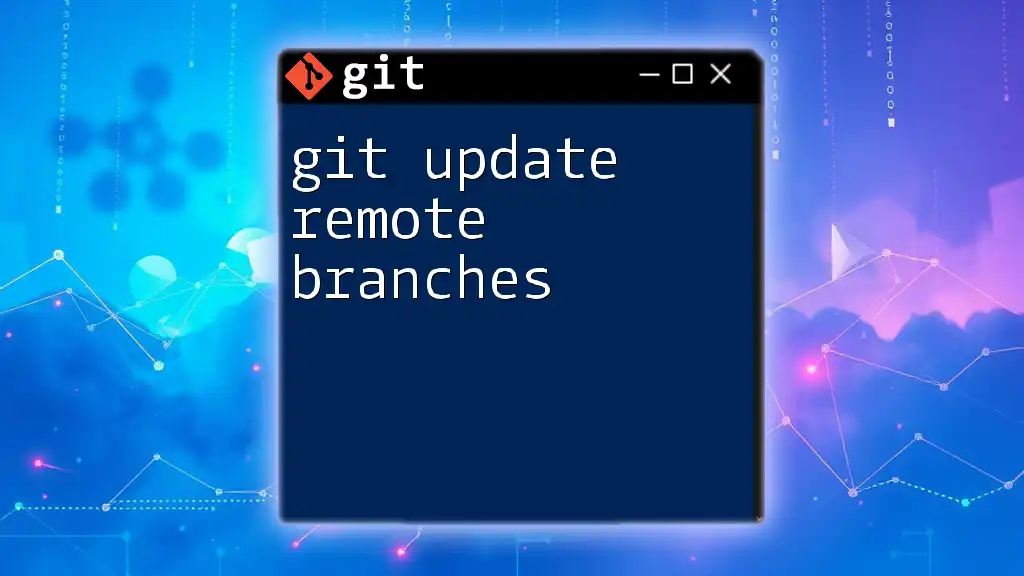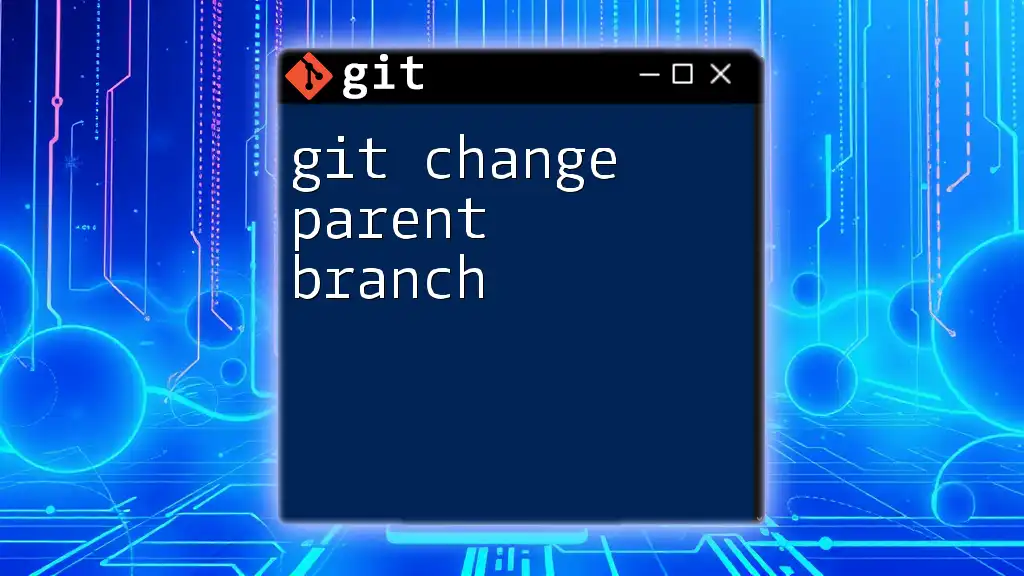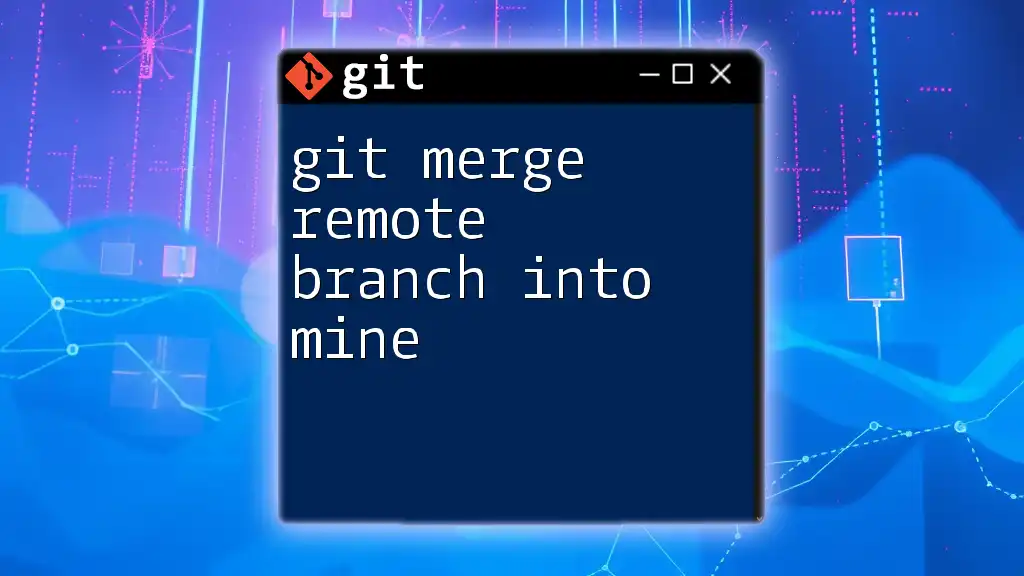To change the remote branch in Git, use the following command to set the upstream branch for your local branch to a different remote branch.
git push --set-upstream origin <new-branch-name>
Understanding Remote Branches
What is a Remote Branch?
A remote branch is a version of your project that is hosted on a remote repository, allowing multiple collaborators to work on it simultaneously. Unlike local branches that you can create and edit in your own copy of the repository, remote branches are shared with other team members and maintained in a centralized location.
The key difference between local and remote branches is that local branches exist only on your machine, while remote branches reflect changes made by everyone collaborating on the project. This makes remote branches essential for coordinating efforts in collaborative projects.
Common Terms Related to Remote Branches
Understanding some relevant terminology can help when discussing or using remote branches:
- Remote Repository: A version of your project stored on an external server, accessible by multiple collaborators. Example services include GitHub, GitLab, or Bitbucket.
- Tracking Branches: Local branches that have a direct relationship with remote branches. They reflect the state of the corresponding remote branch.
- Fetching, Pulling, and Pushing:
- Fetch: Retrieve updates from a remote without merging them into your current branch.
- Pull: Fetch updates and merge them into your current branch.
- Push: Send local changes to a remote branch.
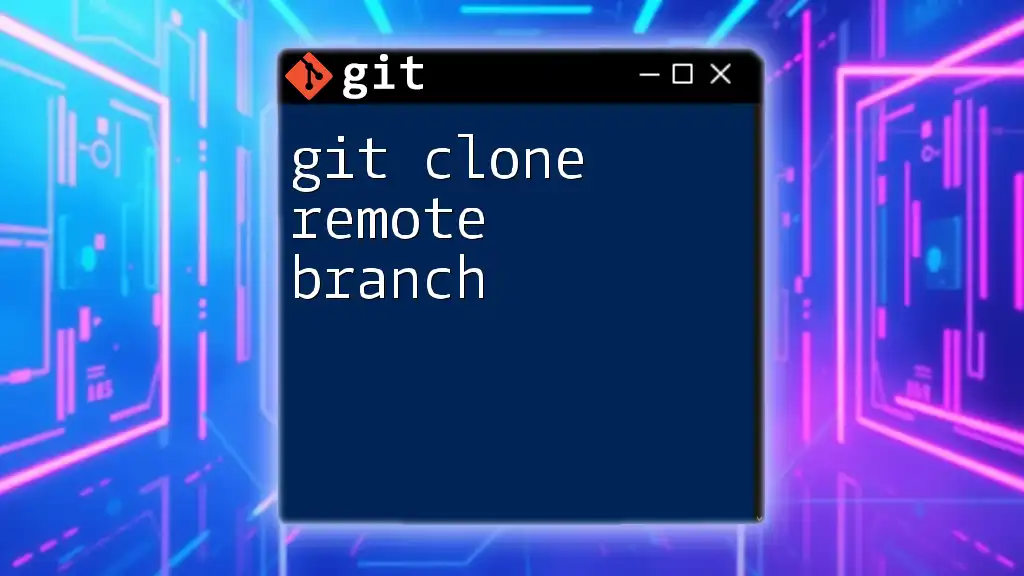
Why You Might Need to Change a Remote Branch
Reasons for Changing a Remote Branch
Changing a remote branch can be necessary for various reasons, including:
- Switching to support a new feature: You may initially work on one feature and need to change branches to start working on another.
- Fixing bugs on different branches: Accessing different branches allows you to concentrate on specific issues without the distractions of other ongoing developments.
- Collaborating with others on different responsibility areas: Different team members may work on distinct branches assigned to specific responsibilities, necessitating branch switching.
Typical Scenarios
There are several everyday scenarios where changing a remote branch becomes crucial:
- Navigating between production and development branches: When your main work focus shifts, such as releasing a new version or addressing bugs in production.
- Adapting to upstream changes in a collaborative environment: If your team adopts new priorities or guidelines, you'll often need to switch branches to adhere to the latest direction.
How to Change the Remote Branch
Checking Current Remote Branch
Before making any changes, it's essential to understand which remote branches are available. Use the following command to list the current remote branches:
git branch -r
This command will output a list of remote branches in your repository. Familiarizing yourself with these can guide you in your next steps.
Changing the Remote Branch
Updating the Remote URL
If you're shifting working contexts (e.g., changing to a different repository), you may need to update the remote's URL. Execute this command:
git remote set-url origin <new-url>
This command allows you to specify a new repository location for your remote branch, enabling you to continue working seamlessly under the new URL.
Fetching the Latest Changes
Before changing branches, it’s prudent to fetch the latest updates from the remote. This ensures you'll have the most current state of the repository. To fetch changes, use:
git fetch origin
This command collects updates from the remote repository without merging them into your local branch, giving you the chance to review the changes before deciding how to proceed.
Switching to a New Remote Branch
Once ready, you can switch to a new remote branch with the following command:
git checkout -b <new-branch> origin/<new-branch>
Here's what this command does:
- `git checkout -b <new-branch>` creates a new local branch based on the remote branch.
- `origin/<new-branch>` specifies the remote branch you are checking out.
This effectively sets up a tracking relationship, allowing your local branch to receive future updates from the remote branch and communicate changes.
Deleting a Remote Branch (if needed)
Sometimes, you may want to delete a remote branch, especially if it's no longer needed. Execute the following command to delete a remote branch:
git push origin --delete <branch-name>
Before doing this, ensure that there’s no relevant work left unmerged. Deleting a branch can lead to data loss, so always confirm with your team if unsure.
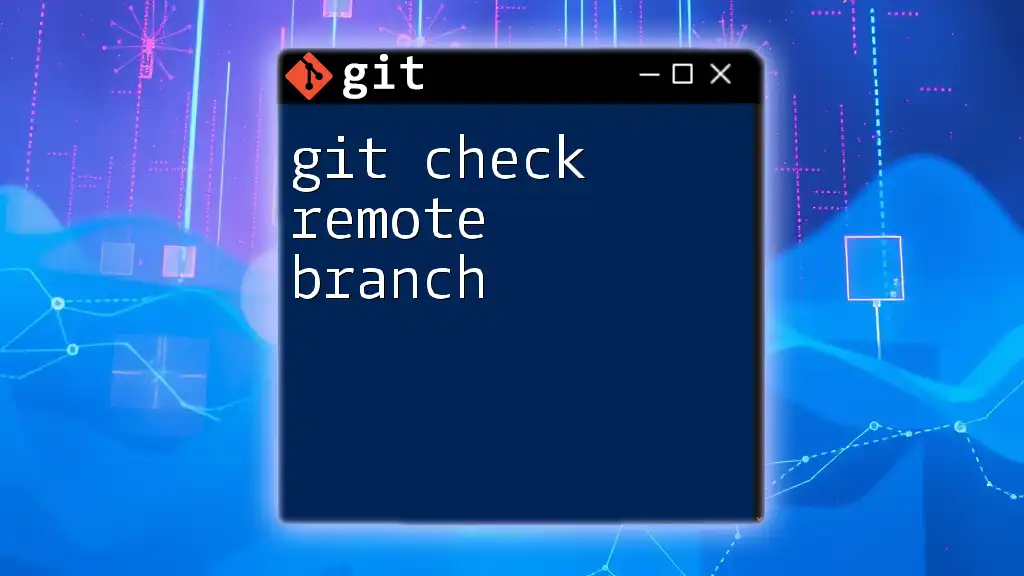
Best Practices for Working with Remote Branches
Regularly Update Your Local Branch
To stay up-to-date and avoid conflicts, regularly update your local branch. Use this command to pull updates from the remote:
git pull --rebase
Rebasing integrates changes while maintaining a cleaner commit history, which can be beneficial in collaborative workflows.
Use Meaningful Branch Names
Branch names should convey the purpose of the branch. Avoid vague names and aim for specificity to ensure anyone looking at the repository can immediately understand the branch's focus. For instance, instead of naming a branch `feature123`, consider a more descriptive name like `feature/login-authentication`.
Collaborate Effectively
Prioritize effective communication with your team. Establishing clear guidelines for branch creation, naming, and usage can help streamline processes and minimize misunderstandings. Remember to document branch changes and decisions for future reference, keeping all team members informed.
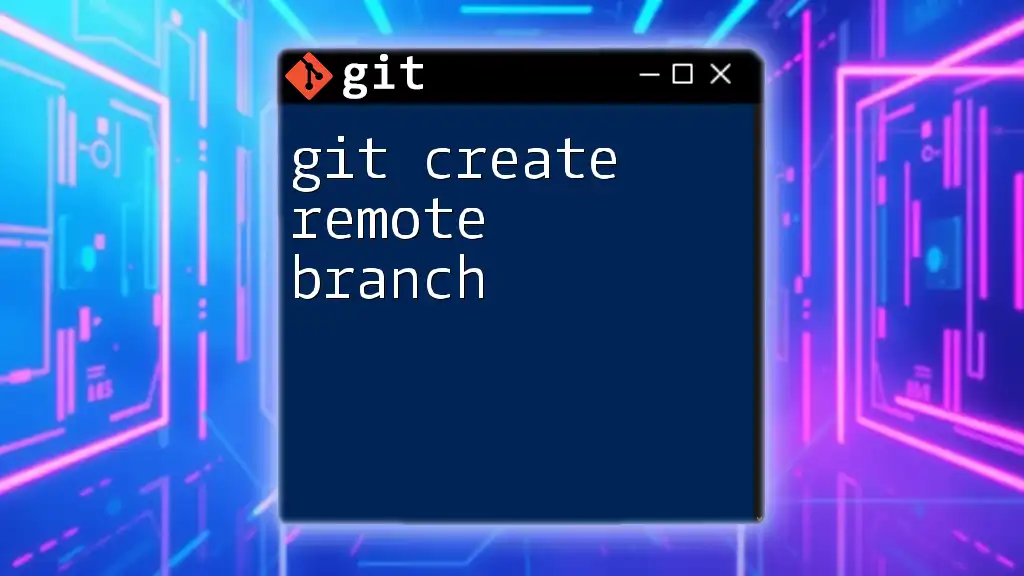
Troubleshooting Common Issues
Problems When Changing Remote Branches
While working with remote branches, you might encounter some common errors. For instance, running the command to check out a branch might give you an error message like:
fatal: 'origin/<branch-name>' not found
This error usually occurs if the branch does not exist on the remote. Double-check the branch name and fetch the most recent list of branches using `git fetch origin` to ensure you have the correct names.
FAQ Section
Q: How can I view the differences between my local branch and the remote branch?
A: You can use the following command to see the differences:
git diff <local-branch> origin/<remote-branch>
Q: What should I do if there are conflicts during merging?
A: Conflicts may arise during merges; in that case, you'll need to manually resolve them. Use `git status` to identify files with conflicts, resolve them, and then conclude the merge with a `git commit`.

Conclusion
Understanding how to effectively git change remote branch operations is crucial for any collaborator using Git. Whether you're switching to support new features or adapting to changes in a dynamic team environment, mastering this process will enhance your efficiency and collaboration. Regular practice will help reinforce these skills, paving the way for a smoother development experience. Remember to stay engaged with your team and keep your documentation updated as you navigate through various branches in your projects.

Additional Resources
For further learning, explore links to official Git documentation, recommended books, or courses to deepen your understanding. Engage with community forums or discussion groups where you can ask questions and share insights with fellow Git enthusiasts.







